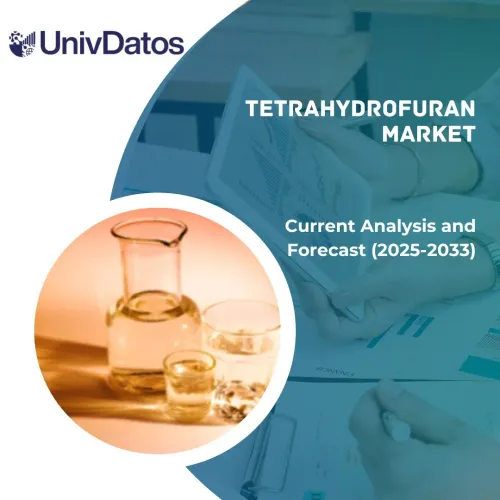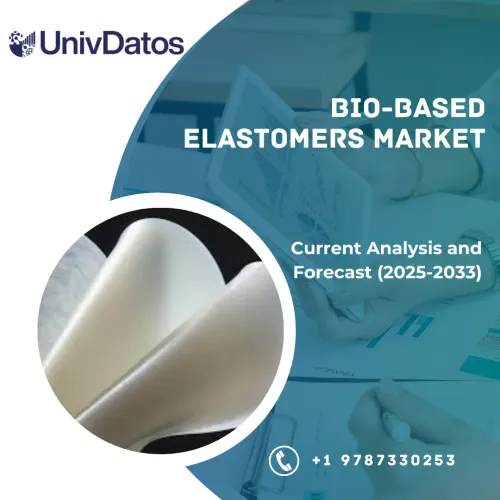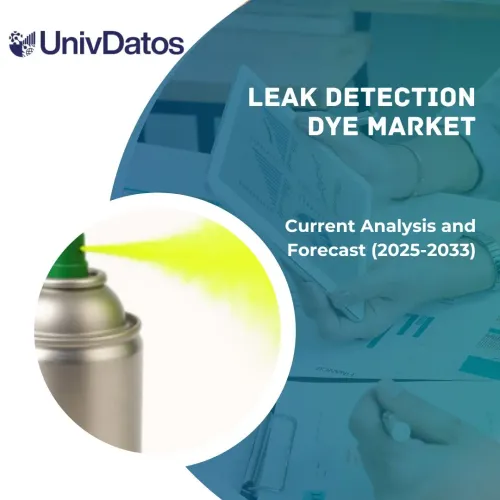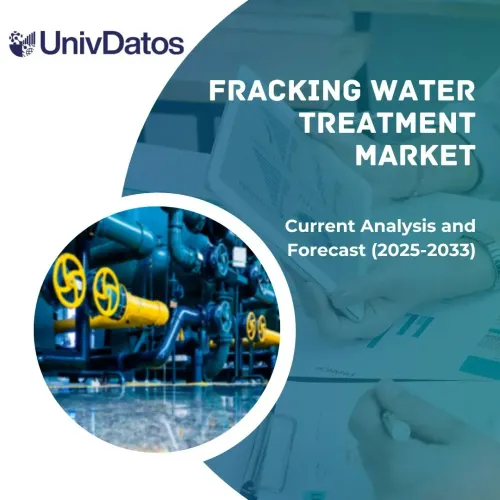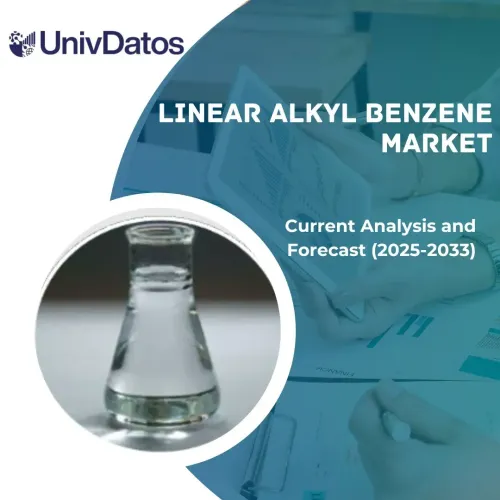- Home
- Chi siamo
- Settore
- Servizi
- Lettura
- Contattaci
Mercato dei nanorivestimenti: analisi attuale e previsioni (2024-2032)
Enfasi sul tipo (antimicrobico, autopulente, anti-impronta, anticorrosione e altri); Applicazione (automotive, sanitario, elettronica, edilizia e altri); Regione/Paese.
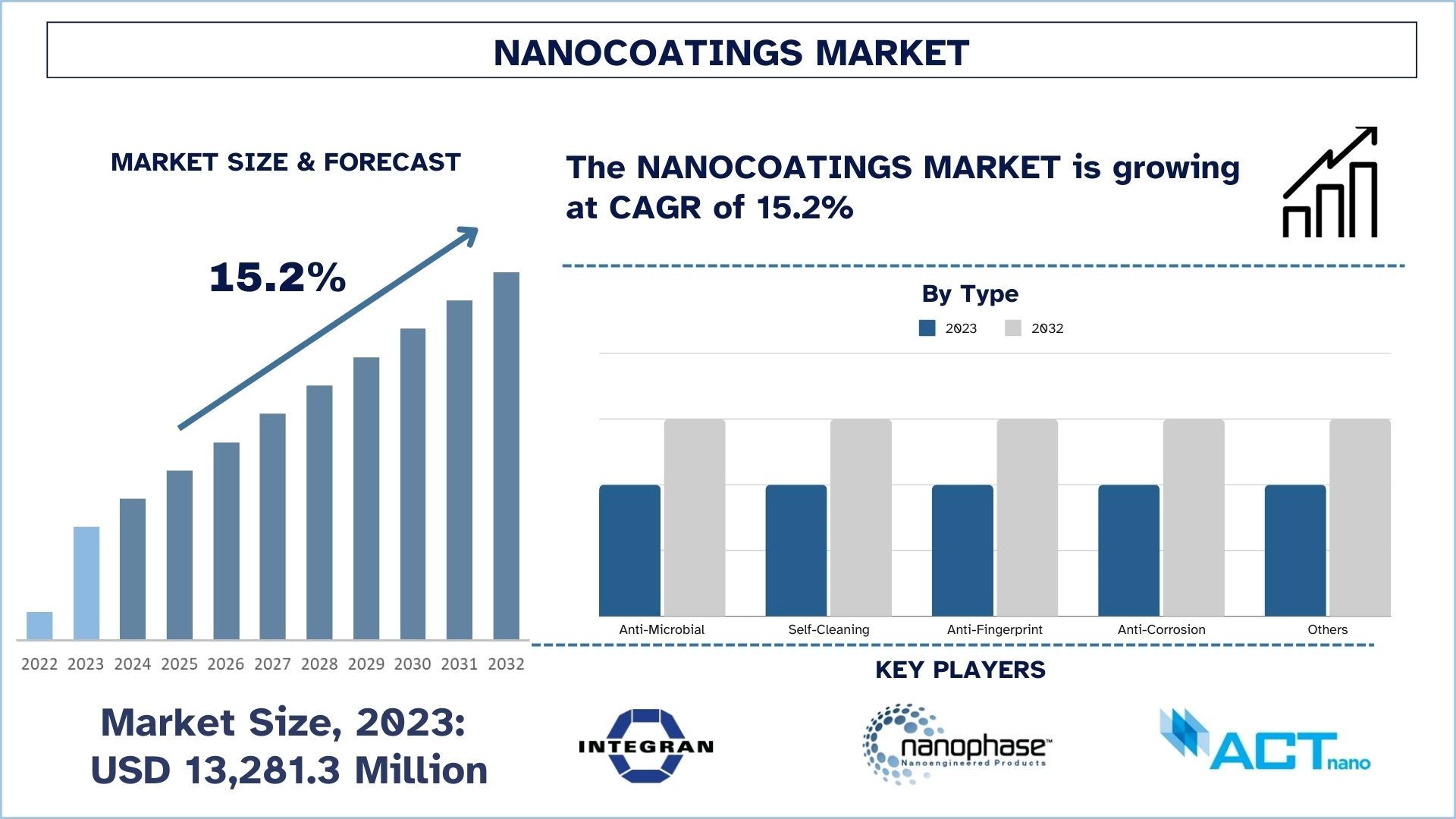
Dimensioni e previsioni del mercato dei nanorivestimenti
Il mercato dei nanorivestimenti è stato valutato a 13.281,3 milioni di dollari nel 2023 e si prevede che crescerà a un forte CAGR di circa il 15,2% durante il periodo di previsione (2024-2032) grazie al crescente utilizzo nel settore sanitario.
Analisi del mercato dei nanorivestimenti
Il mercato dei nanorivestimenti rimane un segmento caldo nello spazio globale dei materiali avanzati a causa della domanda sostenuta di superfici antiriflesso superiori in vari campi che includono il settore medico, automobilistico, edile ed elettronico. I nanorivestimenti sono rivestimenti a film sottile applicati sui substrati per migliorare caratteristiche quali caratteristiche antibatteriche, protezione dalla corrosione e autopulizia. I principali fattori trainanti del mercato includono una crescente necessità di controllo delle infezioni nel settore sanitario e nei settori automobilistico e aerospaziale grazie a materiali più leggeri e ad alta durata e alla ricerca svolta su prodotti verdi con bassi composti organici volatili. L'evoluzione tecnologica delle nanotecnologie contribuisce ugualmente alla crescita del mercato poiché fa scaturire la possibilità di progettare rivestimenti unici ottimali per determinati settori.
Le principali nazioni in crescita nel settore dei nanorivestimenti sono India, Cina e Stati Uniti. In India, il governo ha lanciato campagne come "Make in India" e ha adottato un nuovo incentivo legato alla produzione (Production-Linked Incentive, PLI) che funge da catalizzatore per avviare nuove unità di produzione per prodotti nazionali che richiederebbero materiali avanzati. L'elevata industrializzazione e le politiche di sostegno della Cina, come i sussidi per le energie rinnovabili e i veicoli elettrici, per l'uso di nanorivestimenti nei settori solare e automobilistico. Gli Stati Uniti sono rafforzati dall'Inflation Reduction Act (IRA), che prevede crediti d'imposta per i progetti di energia rinnovabile e la produzione di prodotti sostenibili, compresi i nanorivestimenti, per sostenere le innovazioni verdi. Tali politiche introdotte dal governo sostengono la crescita del mercato, garantendo così la continua crescita del mercato in queste regioni.
Tendenze del mercato dei nanorivestimenti
Questa sezione illustra le principali tendenze del mercato che influenzano i vari segmenti del mercato dei nanorivestimenti, come identificato dal nostro team di esperti di ricerca.
Applicazioni antimicrobiche e sanitarie
Il crescente numero di applicazioni per i nanorivestimenti antimicrobici e autopulenti è attribuito alla loro indispensabilità nelle strutture sanitarie per ridurre i rischi di infezione e la contaminazione. Queste strutture sanitarie stanno adottando questi rivestimenti per superfici, strumenti e altre apparecchiature per ridurre la trasmissione di malattie. Allo stesso modo, le proprietà autopulenti dei nanorivestimenti sono utilizzate in vari prodotti di consumo e settori pubblici in modo da avere una bassa manutenzione e una maggiore igiene. Questo duplice vantaggio rende i nanorivestimenti antimicrobici e autopulenti una pietra angolare nello sviluppo del mercato.
Espansione nel settore automobilistico e delle energie rinnovabili
I settori automobilistico e aerospaziale svolgono un ruolo molto importante nel mercato dei nanorivestimenti, dove questi sofisticati rivestimenti sono applicati per migliorare la protezione dalla corrosione, la durata e l'efficienza del carburante attraverso soluzioni leggere. Anche altre energie rinnovabili come il solare e l'eolico beneficiano dei nanorivestimenti nel miglioramento dell'efficienza e della durata dei pannelli solari e delle pale delle turbine eoliche, rispettivamente. Inoltre, con la domanda di energia in continua crescita nel mondo, l'uso di fonti di energia rinnovabile, a sua volta, aumenta la necessità di rivestimenti ad alte prestazioni.
Progressi nella tecnologia e nelle preferenze dei consumatori
I progressi nelle nanotecnologie hanno permesso la creazione di rivestimenti protettivi versatili, o strati che hanno proprietà anti-impronta, autoriparanti e resistenti alla degradazione termica. Si tratta di invenzioni che si riferiscono a un'esigenza di mercato in costante crescita da parte dei consumatori di prodotti che siano duraturi e facili da mantenere, soprattutto nel caso dell'elettronica e dell'uso domestico. Il fatto che i rivestimenti possano essere personalizzati per funzionalità specifiche continua a portare in altre industrie il potenziale del mercato.
Soluzioni ecologiche e sviluppo delle infrastrutture
A causa dei miglioramenti nella legislazione ambientale, i nanorivestimenti ecologici a composti organici volatili sono ora ricercati, il che sta aumentando drasticamente la domanda nel mercato. Queste soluzioni sono le preferite dalle industrie al fine di ottenere soluzioni verdi nelle loro produzioni. Allo stesso modo, la crescita delle infrastrutture nei mercati emergenti come l'Asia-Pacifico ha promosso la rapida crescita del mercato grazie a un'adeguata domanda di rivestimenti ad alte prestazioni per una migliore durata delle strutture.
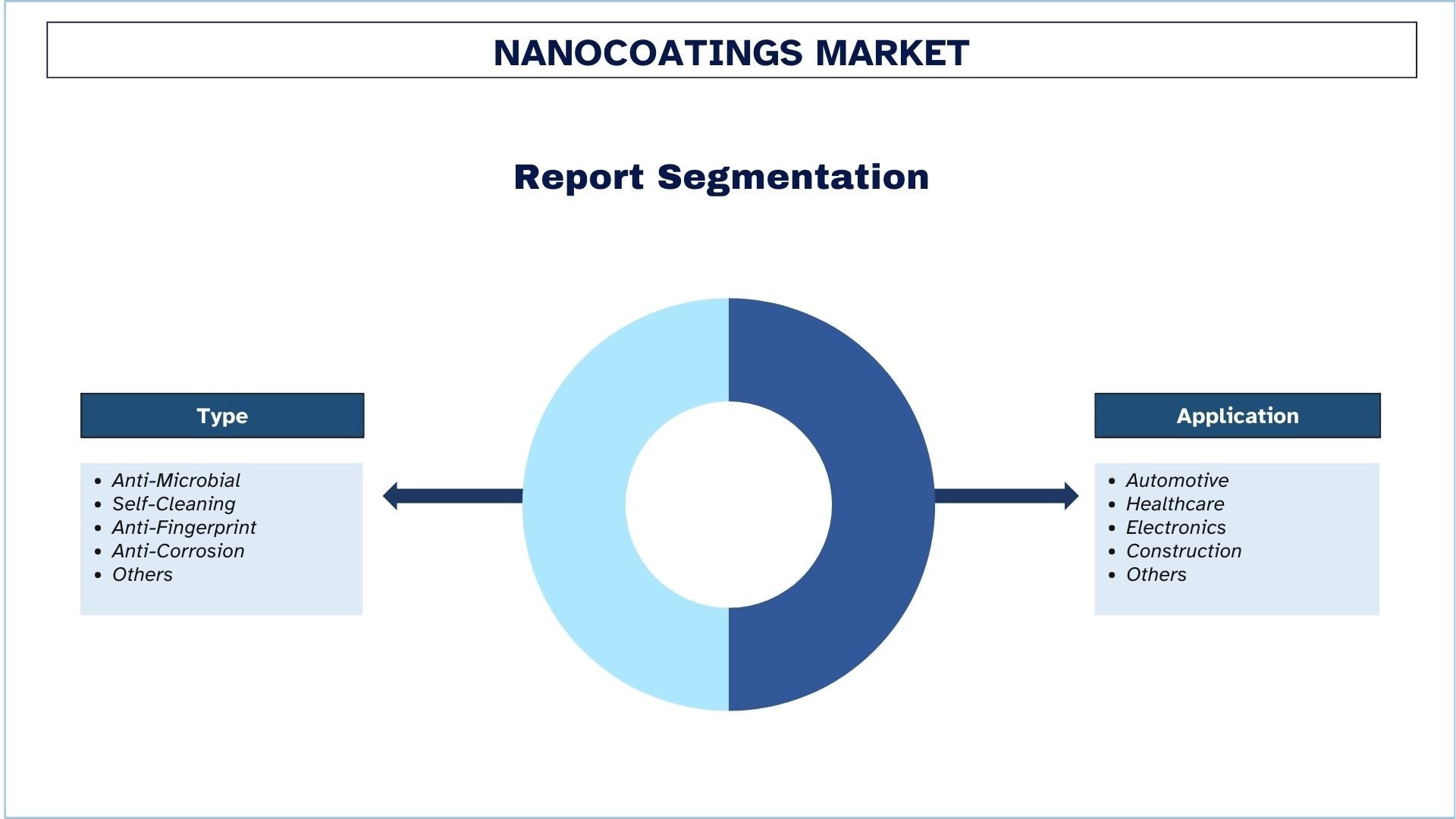
Si prevede che l'APAC crescerà con un CAGR significativo durante il periodo di previsione
Il mercato dei nanorivestimenti nell'APAC sta crescendo a un ritmo più rapido a causa della crescita industriale e del progresso nell'utilizzo di nanorivestimenti ad alte prestazioni in settori importanti come quello automobilistico, dell'elettronica, sanitario e delle costruzioni. I principali mutuatari industriali includono Cina, India, Giappone e Corea del Sud e godono di vantaggi competitivi nella produzione, nella produzione a basso costo e nel vigoroso sostegno governativo delle nanotecnologie. L'industria automobilistica dell'APAC, in particolare la produzione di veicoli, è in aumento e la domanda di materiali più leggeri e resistenti, è dove i nanorivestimenti offrono protezione dalla corrosione e prestazioni più elevate. Allo stesso modo, l'industria elettronica, soprattutto in Cina e Corea, utilizza nanorivestimenti per coprire parti delicate mentre le persone competono per i migliori gadget elettronici sul mercato.
La regione ha anche bisogno di nanorivestimenti ad alta tecnologia nel mercato delle energie rinnovabili, dove aiutano a migliorare l'efficienza e la durata dei sistemi di pannelli solari e turbine eoliche. I progressi infrastrutturali e la crescita urbana in paesi come l'India e l'Indonesia hanno portato l'uso di nanorivestimenti nell'edilizia a un livello superiore per scopi di impermeabilizzazione, protezione dai raggi UV e durata. Inoltre, l'incoraggiamento esecutivo presumibilmente da parte del programma nazionale cinese a medio e lungo termine per lo sviluppo della scienza e della tecnologia e dell'iniziativa indiana di nanoscienza e nanotecnologia aiuta nella ricerca e nello sviluppo delle nanotecnologie e dei loro usi commerciali. Tuttavia, alcune limitazioni come gli elevati costi di produzione e le rigide normative, nonché una preoccupazione in costante aumento per le tecnologie ecocompatibili insieme agli investimenti in R&S dei paesi APAC, rendono questa regione tra i principali motori del mercato dei nanorivestimenti su scala globale.
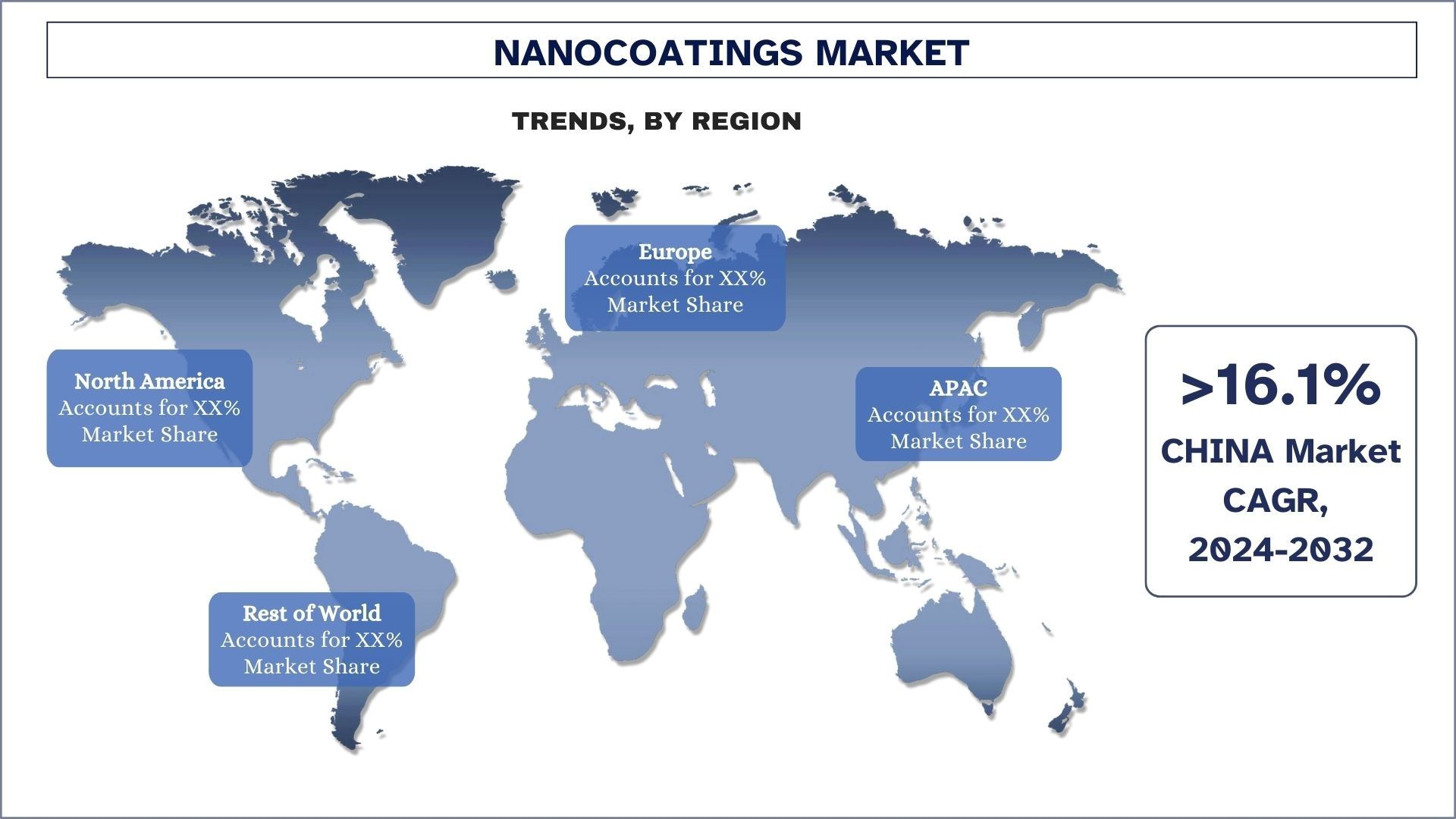
Panoramica del settore dei nanorivestimenti
Il mercato dei nanorivestimenti è competitivo e frammentato, con la presenza di diversi operatori di mercato globali e internazionali. Gli operatori chiave stanno adottando diverse strategie di crescita per migliorare la loro presenza sul mercato, come partnership, accordi, collaborazioni, lanci di nuovi prodotti, espansioni geografiche e fusioni e acquisizioni. Alcuni dei principali operatori che operano nel mercato includono BASF SE, Tesla NanoCoatings, Inc., Nanovere Technologies, LLC., P2i Ltd., PPG Industries, Inc., Integran Technologies Inc., Nanophase Technologies Corporation, ACTnano, Forge Nano Inc. e Nanofilm.
Notizie sul mercato dei nanorivestimenti
Nel settembre 2022, Henkel ha completato l'acquisizione della start-up statunitense di materiali avanzati NBD Nanotechnologies Inc. (NBD Nano). NBD Nano, con sede a Boston, Massachusetts, ha esperienza nello sviluppo di proprietà superficiali come la repellenza per la plastica o i rivestimenti ottici per i display. Con questa acquisizione, Henkel mira a rafforzare la posizione della sua business unit Adhesive Technologies nel settore dei rivestimenti funzionali.
Copertura del rapporto sul mercato dei nanorivestimenti
Attributo del rapporto | Dettagli |
Anno base | 2023 |
Periodo di previsione | 2024-2032 |
Slancio di crescita | Accelererà a un CAGR del 15,2% |
Dimensioni del mercato 2023 | 13.281,3 milioni di dollari |
Analisi regionale | Nord America, Europa, APAC, Resto del mondo |
Principale regione contributiva | Si prevede che l'Asia-Pacifico crescerà al CAGR più alto durante il periodo previsto |
Principali paesi coperti | Stati Uniti, Canada, Germania, Spagna, Italia, Francia, Regno Unito, Cina, Giappone, Corea del Sud e India |
Aziende profilate | BASF SE, Tesla NanoCoatings, Inc., Nanovere Technologies, LLC., P2i Ltd., PPG Industries, Inc., Integran Technologies Inc., Nanophase Technologies Corporation, ACTnano, Forge Nano Inc. e Nanofilm. |
Ambito del rapporto | Tendenze del mercato, fattori trainanti e vincoli; Stima delle entrate e previsioni; Analisi della segmentazione; Analisi della domanda e dell'offerta; Panorama competitivo; Profilazione aziendale |
Segmenti coperti | Per tipo; Per applicazione; Per regione/paese |
Motivi per acquistare questo rapporto:
Lo studio include l'analisi della dimensione del mercato e delle previsioni convalidate da esperti chiave del settore autenticati.
Il rapporto presenta una rapida analisi delle prestazioni complessive del settore a colpo d'occhio.
Il rapporto copre un'analisi approfondita dei principali concorrenti del settore con un focus primario sulle principali informazioni finanziarie aziendali, portafogli di prodotti, strategie di espansione e sviluppi recenti.
Esame dettagliato di fattori trainanti, vincoli, tendenze chiave e opportunità prevalenti nel settore.
Lo studio copre in modo completo il mercato attraverso diversi segmenti.
Analisi approfondita a livello regionale del settore.
Opzioni di personalizzazione:
Il mercato globale dei nanorivestimenti può essere ulteriormente personalizzato in base alle esigenze o a qualsiasi altro segmento di mercato. Oltre a questo, UMI comprende che potresti avere le tue esigenze aziendali, quindi non esitare a contattarci per ottenere un rapporto che si adatti completamente alle tue esigenze.
Indice
Metodologia di ricerca per l'analisi del mercato dei nanorivestimenti (2024-2032)
L'analisi del mercato storico, la stima del mercato attuale e la previsione del mercato futuro dei nanorivestimenti globali sono stati i tre passaggi principali intrapresi per creare ed esplorare l'adozione dei nanorivestimenti nelle principali regioni a livello globale. È stata condotta un'esauriente ricerca secondaria per raccogliere i dati storici di mercato e stimare le dimensioni del mercato attuale. In secondo luogo, sono state prese in considerazione numerose scoperte e ipotesi per convalidare queste intuizioni. Inoltre, sono state condotte esaurienti interviste primarie con esperti del settore lungo tutta la catena del valore del mercato globale dei nanorivestimenti. Dopo l'assunzione e la convalida dei dati di mercato attraverso interviste primarie, abbiamo impiegato un approccio top-down/bottom-up per prevedere le dimensioni complete del mercato. Successivamente, sono stati adottati metodi di suddivisione del mercato e di triangolazione dei dati per stimare e analizzare le dimensioni del mercato dei segmenti e dei sottosegmenti del settore. La metodologia dettagliata è spiegata di seguito:
Analisi delle dimensioni del mercato storico
Fase 1: Studio approfondito delle fonti secondarie:
È stato condotto uno studio secondario dettagliato per ottenere le dimensioni storiche del mercato dei nanorivestimenti attraverso fonti interne aziendali come relazioni annuali e bilanci, presentazioni sulle performance, comunicati stampa, ecc., e fonti esterne tra cui riviste, notizie e articoli, pubblicazioni governative, pubblicazioni della concorrenza, relazioni di settore, database di terze parti e altre pubblicazioni credibili.
Fase 2: Segmentazione del mercato:
Dopo aver ottenuto le dimensioni storiche del mercato dei nanorivestimenti, abbiamo condotto un'analisi secondaria dettagliata per raccogliere informazioni storiche sul mercato e sulla quota per diversi segmenti e sottosegmenti per le principali regioni. I segmenti principali inclusi nel rapporto sono Tipo e Applicazione. Sono state inoltre condotte analisi a livello di paese per valutare l'adozione complessiva dei modelli di test in quella regione.
Fase 3: Analisi dei fattori:
Dopo aver acquisito le dimensioni storiche del mercato dei diversi segmenti e sottosegmenti, abbiamo condotto un'analisi dei fattori dettagliata per stimare le dimensioni attuali del mercato dei nanorivestimenti. Inoltre, abbiamo condotto un'analisi dei fattori utilizzando variabili dipendenti e indipendenti come Tipo e Applicazione del mercato dei nanorivestimenti. È stata condotta un'analisi approfondita degli scenari della domanda e dell'offerta considerando le principali partnership, fusioni e acquisizioni, l'espansione aziendale e i lanci di prodotti nel settore dei nanorivestimenti in tutto il mondo.
Stima e previsione delle dimensioni del mercato attuale
Dimensionamento del mercato attuale: sulla base delle informazioni fruibili derivanti dai 3 passaggi precedenti, siamo giunti alle dimensioni attuali del mercato, ai principali attori nel mercato globale dei nanorivestimenti e alle quote di mercato dei segmenti. Tutte le suddivisioni percentuali richieste e le suddivisioni del mercato sono state determinate utilizzando l'approccio secondario sopra menzionato e sono state verificate attraverso interviste primarie.
Stima e previsione: per la stima e la previsione del mercato, sono stati assegnati pesi diversi a diversi fattori, tra cui driver e tendenze, vincoli e opportunità disponibili per le parti interessate. Dopo aver analizzato questi fattori, sono state applicate tecniche di previsione pertinenti, ovvero l'approccio top-down/bottom-up, per arrivare alla previsione di mercato per il 2032 per diversi segmenti e sottosegmenti nei principali mercati a livello globale. La metodologia di ricerca adottata per stimare le dimensioni del mercato comprende:
Le dimensioni del mercato del settore, in termini di entrate (USD) e il tasso di adozione dei nanorivestimenti nei principali mercati nazionali
Tutte le quote percentuali, le suddivisioni e le ripartizioni dei segmenti e sottosegmenti di mercato
I principali attori nel mercato globale dei nanorivestimenti in termini di prodotti offerti. Inoltre, le strategie di crescita adottate da questi attori per competere nel mercato in rapida crescita
Convalida delle dimensioni e della quota di mercato
Ricerca primaria: sono state condotte interviste approfondite con i Key Opinion Leaders (KOL), tra cui dirigenti di alto livello (CXO/VP, responsabile vendite, responsabile marketing, responsabile operativo, responsabile regionale, responsabile nazionale, ecc.) nelle principali regioni. I risultati della ricerca primaria sono stati quindi riepilogati e sono state eseguite analisi statistiche per dimostrare l'ipotesi dichiarata. Gli input derivanti dalla ricerca primaria sono stati consolidati con i risultati secondari, trasformando quindi le informazioni in intuizioni fruibili.
Ripartizione dei partecipanti primari nelle diverse regioni
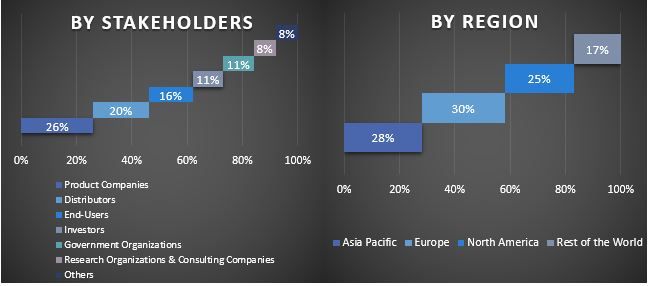
Ingegneria del mercato
È stata impiegata la tecnica di triangolazione dei dati per completare la stima complessiva del mercato e per arrivare a numeri statistici precisi per ogni segmento e sottosegmento del mercato globale dei nanorivestimenti. I dati sono stati suddivisi in diversi segmenti e sottosegmenti dopo aver studiato vari parametri e tendenze nelle aree del Tipo e dell'Applicazione nel mercato globale dei nanorivestimenti.
L'obiettivo principale dello studio sul mercato globale dei nanorivestimenti
Le tendenze attuali e future del mercato globale dei nanorivestimenti sono state individuate nello studio. Gli investitori possono ottenere informazioni strategiche su cui basare la propria discrezione per gli investimenti sull'analisi qualitativa e quantitativa eseguita nello studio. Le tendenze di mercato attuali e future hanno determinato l'attrattiva complessiva del mercato a livello regionale, fornendo una piattaforma per il partecipante industriale per sfruttare il mercato non sfruttato per beneficiare di un vantaggio di first-mover. Altri obiettivi quantitativi degli studi includono:
Analizzare le dimensioni attuali e previste del mercato dell'industria dei nanorivestimenti in termini di valore (USD). Inoltre, analizzare le dimensioni attuali e previste del mercato dei diversi segmenti e sottosegmenti
I segmenti nello studio includono le aree di Tipo e Applicazione
Definire e analizzare il quadro normativo per l'industria dei nanorivestimenti
Analizzare la catena del valore coinvolta con la presenza di vari intermediari, insieme all'analisi dei comportamenti dei clienti e dei concorrenti del settore
Analizzare le dimensioni attuali e previste del mercato dei nanorivestimenti per la regione principale
I principali paesi delle regioni studiati nel rapporto includono Asia Pacifico, Europa, Nord America e il resto del mondo
Profili aziendali del mercato dei nanorivestimenti e le strategie di crescita adottate dagli attori del mercato per sostenersi nel mercato in rapida crescita
Analisi approfondita a livello regionale del settore
Domande frequenti FAQ
Q1: Qual è la dimensione attuale del mercato e il potenziale di crescita del mercato dei Nanorivestimenti?
Il mercato dei nanorivestimenti è stato valutato a 13.281,3 milioni di dollari USA e si prevede che crescerà con un forte CAGR di circa il 15,2% durante il periodo di previsione (2024-2032).
Q2: Quali sono i fattori trainanti per la crescita del mercato dei nanorivestimenti?
La crescita del mercato dei nanorivestimenti è guidata dalla crescente domanda di soluzioni avanzate per la protezione delle superfici nei settori sanitario, automobilistico, elettronico e delle costruzioni.
Q3: Quale segmento detiene la quota maggiore nel mercato dei nanorivestimenti per Tipologia?
Il segmento antimicrobico detiene la quota maggiore del mercato dei nanorivestimenti per tipologia.
Q4: Quali sono le tecnologie e le tendenze emergenti nel mercato dei nanorivestimenti?
Le tecnologie emergenti nel mercato dei nanorivestimenti includono i rivestimenti auto-riparanti, i rivestimenti intelligenti reattivi agli stimoli ambientali e le formulazioni eco-compatibili, riflettendo una tendenza verso soluzioni multifunzionali e sostenibili.
Q5: Quale regione dominerà nel mercato dei nanorivestimenti?
Si prevede che l'APAC dominerà il mercato durante il periodo di previsione.
Correlati Report
I clienti che hanno acquistato questo articolo hanno acquistato anche

